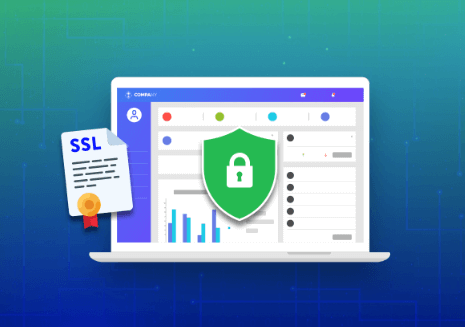In the intricate web of the digital world, where information traverses the vast expanse of cyberspace, the need for robust security measures is paramount. One such guardian of online integrity is the SSL certificate. In this article, we delve into the depths of SSL certificates, exploring their importance, functionality, and the pivotal role they play in fortifying our digital interactions. Visit on primasecure.com for more information.
Introduction to SSL Certificates: Gatekeepers of Security:
At the heart of secure online communication lies the Secure Socket Layer (SSL), a cryptographic protocol designed to establish a secure connection between a web server and a user’s browser. SSL certificates, the sentinels of this encrypted link, are digital certificates issued by Certificate Authorities (CAs) to ensure that data transmitted across the internet remains shielded from potential threats.
Encryption Unveiled: SSL Certificates in Action:
Encryption, the cornerstone of cybersecurity, involves converting data into a coded format to prevent unauthorized access. SSL certificates employ robust cryptographic algorithms to encrypt data during its journey, rendering it unreadable to anyone attempting to intercept it illicitly. This encryption is particularly vital when dealing with sensitive information such as personal details, login credentials, and financial transactions.
Components of an SSL Certificate: Decoding the Elements:
To comprehend the inner workings of SSL certificates, it’s crucial to understand their key components:
Public and Private Keys:
SSL certificates operate on a pair of keys – a public key for encryption and a private key for decryption. This cryptographic dance ensures that the information exchanged remains confidential and secure.
Certificate Authority (CA):
Acting as the trusted gatekeeper, CAs are responsible for issuing SSL certificates. Beyond issuance, they play a crucial role in verifying the legitimacy of the certificate holder, adding an extra layer of trust to online interactions.
Common Name (CN):
Serving as an identifier, the Common Name is a crucial element of an SSL certificate. It represents the domain or subdomain for which the certificate is issued, enabling users to verify the authenticity of the website they are engaging with.
Strengthening Website Security: SSL Certificates in Action:
SSL certificates go beyond data encryption, contributing significantly to overall website security:
Data Integrity:
In addition to encryption, SSL certificates ensure the integrity of transmitted data. By confirming that the information hasn’t been tampered with during transmission, SSL certificates uphold the accuracy and reliability of the data.
Trust and Credibility:
Websites equipped with SSL certificates display a padlock icon and “https” in the address bar – visual cues of a secure connection. This builds trust among users, assuring them that their sensitive information is handled with the utmost care.
Search engines favor secure websites, and SSL certificates positively influence a website’s Search Engine Optimization (SEO). This, in turn, can attract more visitors and enhance online visibility.
Types of SSL Certificates: Tailoring Security to Needs:
SSL certificates are not a one-size-fits-all solution; they come in various types to cater to different security needs:
Domain Validated (DV) Certificates:
These certificates verify domain ownership, providing basic encryption. Suitable for small websites and blogs, they offer a foundational level of security.
Organization Validated (OV) Certificates:
Going beyond DV, OV certificates validate both the organization’s identity and domain ownership. Ideal for businesses and e-commerce sites, they instill an additional layer of trust.
Extended Validation (EV) Certificates:
Representing the pinnacle of SSL validation, EV certificates undergo rigorous verification processes. Websites with EV certificates display the company name in the address bar, providing the highest level of user confidence.
Installation and Renewal: Sustaining the Security Barrier:
Installing an SSL certificate involves several steps, including generating a Certificate Signing Request (CSR) and installing the issued certificate on the server. Regular renewal is crucial to ensuring uninterrupted security, with automated processes and reminders aiding website owners in staying vigilant about this critical aspect of SSL management.
Conclusion: Upholding the Guardianship of SSL Certificates:
In the ever-evolving digital realm, SSL certificates stand as stalwart guardians, securing online communication and fostering trust. As technology advances, their role expands, making them an indispensable component of a secure and trustworthy internet. By understanding their significance and adhering to best practices in implementation, website owners contribute to a safer digital environment for users globally. The SSL certificate, a beacon of cybersecurity, ensures that the digital world remains fortified against the waves of cyber threats, offering a secure haven for information exchange.



